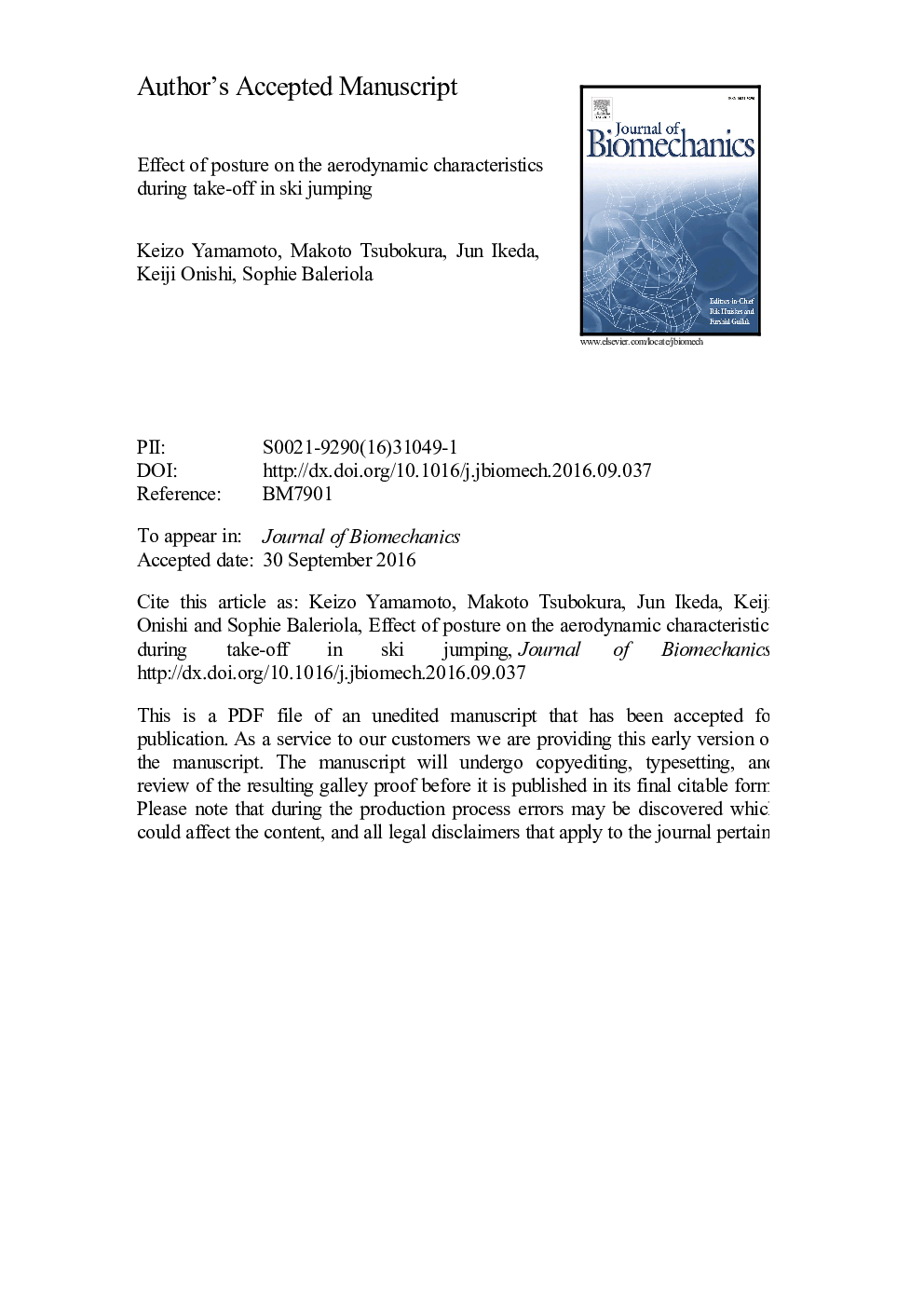| Article ID | Journal | Published Year | Pages | File Type |
|---|---|---|---|---|
| 5032349 | Journal of Biomechanics | 2016 | 49 Pages |
Abstract
The purpose of this study was to investigate the effects of posture of a ski jumper on aerodynamic characteristics during the take-off using computational fluid dynamics (CFD). The CFD method adopted for this study was based on Large-Eddy Simulation. Body surface data were obtained by 3-D laser scanning of an active ski jumper. Based on video analysis of the actual take-off movement, two sets of motion data were generated (world-class jumper A and less-experienced jumper B). The inlet flow velocity that corresponds to the in-run velocity in actual ski jumping was set to 23.23 m/s in the CFD. The aerodynamic force, flow velocity, and vortexes for each model were compared between models. The total drag force acting upon jumper A was lower than that acting upon jumper B through the whole movement. Regarding the total lift force, although jumper A׳s total lift force was less in the in-run posture, it became greater than that of jumper B at the end of the movement. In the latter half of the movement, low air-speed domain expansion was observed at the model׳s back. This domain of jumper B was larger. There were two symmetric vortexes in the wake of jumper A, but the disordered vortexes were observed behind the jumper B. In the case of jumper A, these two distinct vortexes generated by the arms produced a downwash flow in the wake. It is considered that the positioning of the arms in a very low position strongly influences the flow structure.
Related Topics
Physical Sciences and Engineering
Engineering
Biomedical Engineering
Authors
Keizo Yamamoto, Makoto Tsubokura, Jun Ikeda, Keiji Onishi, Sophie Baleriola,
